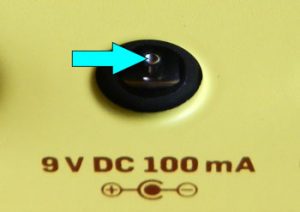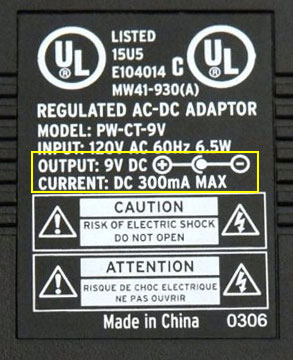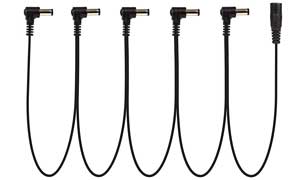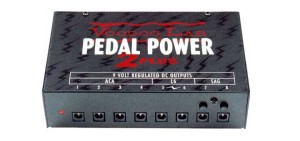How To Power Multiple Guitar Pedals
A daisy chain allows you to connect and power multiple guitar pedals from one power supply. Creating a daisy chain for your guitar pedals is easy, but there are a few things you need to get right or you risk burning out your power supply and adding noise to the signal.To learn how daisy chaining pedals compare against other power options, read through my guide on How to Power Your Guitar Pedals.Reading: how to power multiple guitar pedals
What is a Daisy Chain
Contents
Here is an example of a few guitar pedals daisy chained together:You can see that the one power supply is powering all of these guitar pedals together. That’s the whole idea behind a daisy chain – one power supply unit can power multiple pedals. This means you don’t have to have a dedicated power supply for each individual pedal you use (although there are rare times when this would be preferred).The benefit of using a daisy chain to power multiple guitar pedals is that it takes up less space, less to carry around and less cables. Its also nice and cheap to set up as you don’t need to buy a new power supply for each new pedal.
Voltage, Milliamps & Center Pins
To make sure you don’t burn out your power supply unit or wreck your pedals, its important you know a little bit about power. We’ll take a look at this topic in a future guide, so for now there are three basic things you need to know about powering your pedals:VoltageVoltage is hard to explain, so imagine a running water hose. The voltage can be thought of as the pressure of the end of the hose. Imagine trying to hold your hand against a running garden hose (low voltage) compared to a running fire hydrant (high voltage).Most guitar pedals require 9 Volts to power the pedal. This is why so many pedals allow you to power them with a standard 9V battery. While most pedals only require 9V, some do need higher voltage and some can give you the option of going higher. For example, the Fulltone OCD allows you to run it at 9V, 12V or 18V. Changing the voltage level can give you a different tone.Running the wrong voltage on a pedal can ruin the pedal (imagine connecting a fire hydrant to a cheap garden sprinkler system) so make sure you check before connecting a power supply to a pedal.Current (measured in mA)With our water hose example, we think of voltage as the pressure of the water. Current can be thought of as the flow of the water. So a high current would be a fast flow of water and a low current a slow flow of water.Think of guitar pedals as pumps that suck the water out of a pipe. A high current pedal draws a high flow of electricity and a low current pedal draws a low flow of electricity. If the power supply doesn’t provide enough power to meet the pedal’s needs, the power supply will burn out.So it is important that you buy a power supply that supplies more current than the pedal can draw.Current is measured in milliamps (mA). You’re likely to see numbers like 100mA, 300mA or 500mA on pedals and power supply units.You may even see power supplies with 1A listed. 1A = 1000mAWhat’s important to remember here is that the number placed on the pedal may not be the actual current the pedal draws. So if a pedal has 100mA on it (as shown below), it doesn’t mean it actually draws 100mA. The pedal may only draw 18mA or 50mA. When we daisy chain pedals together, we want to know what the actual current draw is.

How to Power Multiple Guitar Pedals
To show how to daisy chain effect pedals, let’s use the pedals recommended for beginners in this guide. There are five pedals in that guide so the first step is to figure out the power requirements for each pedal.Step 1: Find out the power requirements for all pedalsEach pedal’s power requirements will be listed on the manual or information sheet that comes with the pedal. If you don’t have one, simply search in Google for “[pedal name] manual” or “[pedal name] power draw”.Here are the power requirements (voltage, current, center pin) for each pedal:
- TC Electronic PolyTune 2 Mini – 9V, 50mA, negative center pin
- EHX Soul Food – 9V, 22mA, negative center pin
- Dunlop Original Crybaby Wah – 9V, <2mA, negative center pin
- TC Electronic Flashback Delay – 9V, 86mA, negative center pin
- TC Electronic Ditto Looper – 9V, 100mA, negative center pin
If a pedal gives a range for the current draw (eg: 450-50mA), always take the higher number to work out the maximum current draw.You can see that all of the pedals require 9V and all require a negative center pin. This means that all of the pedals can be daisy chained together. If one of the pedals required a higher voltage or had a positive center pin (like some vintage pedals), we wouldn’t be able to chain that pedal with the others.You’ll also notice there is a big difference between the pedals in how much current they draw. Some pedals such will draw very little current (such as the wah) while others can have huge current draws (delay pedals typically draw a lot of current). So if you add up the current across all of your pedals the total could be well under 100mA or it could be over 1000mA.Step 2: Add up the current draw for each pedalNow that we know the power requirements for each pedal, we can figure out the total current draw across all pedals. To do this you simply add together the power draw of each individual pedal.The total current draw for the above pedals is: 50 + 22 + 2 + 86 + 100 = 260mAThis means the maximum current draw from all of these pedals together should only be 260mA.Step 3: Find a suitable power supply & daisy chain cableThis means any power supply that offers over 260mA in current should work with this pedal combination. 300mA power supplies are pretty common and should work fine here. But its a good idea to buy a power supply that gives you a wide gap between what the pedals draw and the power supply’s maximum current.A good rule of thumb is to get a power supply at least 100mA higher than what your pedals require.So for our example, it would be a good idea to skip the 300mA power supply and look for something higher. Not only will this make sure we never reach the maximum limit of the 300mA power supply, but it means if we wanted to add another pedal to the rig we might be able to keep using the same power supply.Let’s look at a few different examples of different power supplies and daisy cables so you can figure out which would suit you best.Godlyke Power-All 5 Right Angle Daisy ChainIf you already have a power supply unit that has a high enough current rating to power all of your pedals, it is very cheap to buy a daisy chain cable to connect to your existing unit. You simply plug the connector from your power supply to the daisy chain and you’re good to go. Here is an example of a daisy chain that allows you to connect up to five pedals together:
Isolating Unused Connectors
This is a really important point to remember when connecting multiple guitar pedals together in a daisy chain. If you have any leftover connectors that aren’t powering pedals, those connectors need to be isolated.Isolating the connector means it must not be able to touch anything else or it might short out your power. For example, if one spare connector comes in contact with another spare connector or the metal casing of a guitar pedal, it will short the power supply out.Some daisy chains will come with plastic caps to place on the end of unused connectors. If you don’t have any caps with your cables, you can use some electrical tape to cover the ends.
Limitations to Daisy Chaining Pedals Together
Connecting multiple guitar pedals together with a daisy chain is a really easy and neat way to power your pedals. You’ll only need one small power supply and can connect quite a few pedals together.But there are limitations with daisy chaining pedals together and you may find that daisy chaining isn’t for you.Different voltagesDaisy chaining allows you to connect pedals with different current requirements together without any problems. But it doesn’t let you connect pedals with different voltage requirements together. A 9V daisy chain will only give you 9V to each pedal. If you have a pedal that needs 12 or 18V, a daisy chain may not be right for you.NoiseAll of the pedals are connected together with the same power supply in the same ground loop. In simple terms, this means all the electronics in all of your pedals are connected together. If you have one pedal that is creating some electronic noise in its circuit, that electronic noise can affect other pedals.This means a daisy chain can give you a noisy tone depending on the pedals you use. This can come across as a constant hum in your sound.If you use a low-quality power supply, that unit can create a lot of noise when run in a daisy chain. The way to avoid this issue is to use an ‘isolated’ power supply. These power supply units will separate each power output so each pedal receives a completely separate supply. As the pedals’ electronics are completely separate, you don’t get any noise in your signal.If you’re getting a hum in your daisy chain, this could be due to the non-isolated power supply or it could just be a noisy pedal. Try isolating each pedal one at a time (either with a battery or separate power supply) and see if it makes a difference.If you hear a change in noise when you isolate a pedal, you might want to keep that pedal isolated or switch to an isolated power supply (shown later).Vintage pedalsMany vintage pedals can cause issues with daisy chains. Some vintage pedals require positive center pins so won’t work in a daisy chain with other pedals. Many vintage pedals require isolated power supplies or else they can introduce a lot of noise in your tone.Some vintage pedals sound best when you can provide them with less than 9V. If you have vintage pedals in your rig, you might want to either isolate those pedals or buy an isolated power supply for all your pedals.
Need More Power?
If you have a large pedalboard or feel daisy chaining is too limited for your needs, here is an option you may want to consider. An isolated power supply such as the Voodoo Lab Pedal Power 2 Plus is seen by many guitarists as the best power supply for guitar pedals available right now.This power supply can power a wide range of pedals and each output is completely isolated. You can even run a daisy chain off of each output to connect more pedals together. Check out my review of the Pedal Power 2 Plus to find out more.
Read more: how to open car door with broken outside handle
Last, Wallx.net sent you details about the topic “How To Power Multiple Guitar Pedals❤️️”.Hope with useful information that the article “How To Power Multiple Guitar Pedals” It will help readers to be more interested in “How To Power Multiple Guitar Pedals [ ❤️️❤️️ ]”.
Posts “How To Power Multiple Guitar Pedals” posted by on 2021-11-02 23:22:14. Thank you for reading the article at wallx.net





